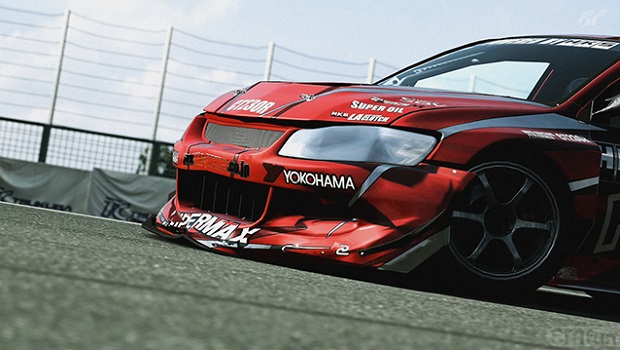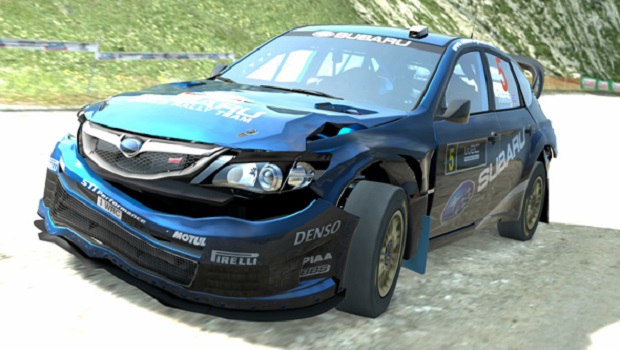Racing games have often been used as showcases for a console’s graphical prowess. Their relatively non-chaotic nature means they can usually be engineered to run smoothly at higher frames per second, while being able to dedicate more power into graphical quality. Shiny cars will continue to become shinier, an obsession that sometimes boarders on the absurd. Evolution Studios’ Matt Sutton’s fetishistic lust over his digital leather seats during DriveClub’s 2013 E3 presentation, shows what kind of thrall cars can have over a middle-aged man.
Nowadays games cannot simply rely on their good looks alone. Simulation racers such as Forza and Gran Turismo, the heavyweights of the genre on Microsoft and Sony’s consoles respectively, have to contend with getting the feel of driving just right. Gran Turismo in particular has billed itself as delivering the most authentic driving experience possible. Its subtitle, The Real Driving Simulator, makes no bones about the game’s ambitions. The series’ partnerships with the likes of the tyre manufacturer Yokohama and suspension company KW shows what lengths the creators go to get the best out of their simulation, basing everything on real world data informing the physics. Hell, they find future racing champions through the GT Academy initiative.
There is however an area that GT has always been lacking in, when compared to its competitors. I refer of course to the incredibly dodgy car damage models that the games use. For the longest time the people at Polyphony Digital refused to implement car damage. A collision at 200mph would see cars bounce away happily, unhurt. How could this be considered the real driving simulator, when a smash that should have resulted in a twisted metal husk had no consequences?
There were murmurs that car manufacturers did not want their license used to see their very desirable products smashed beyond recognition. Nonetheless crash damage was finally added in the fifth instalment of the series, and it continued to be present in Gran Turismo 6. It would seem to the casual observer that the series had finally caught up with every other modern racing game.
The thing is though, they should never have implemented car damage in the first place.
A bold statement it might be, but there is no denying that the addition of car damage is the absolute antithesis of what the series has always been about: the racing and utter appreciation of the motorcar, in all of its forms. This is the game that presents every car with precision detail to their design. It makes sure that the people who know the differences between all of those Skyline models are happy, and includes a detailed production history of each and every car. The photography mode in GT6’s replay option alone is something to behold. Gran Turismo is also a digital time capsule, a history and monument to a world that will have disappeared in as short a time as the next 100 years. The lifespan of the conventional car may be a lot shorter than anyone could have predicted.
There is a sense of reluctance in GT6’s crash physics. While everything else in the game is treated with artistic delicacy, the car damage is superfluous. GT5 had cars warp in strange ways, and it took an awful lot of battering to actually have a piece of your car fall off. GT6 has improved on this, but it is still unsatisfying. At most you will finish a race with some dents and a paint job that looks like it went through a hedge trimmer. It has no effect on the actual racing or car handling. It smacks of pandering to reviewers who were simply unable to overlook the fact that Gran Turismo wasn’t trying to be every other game. That they “needed” it so that they could tick another box on a check list.
Ultimately Gran Turismo is about preservation rather than destruction, and crash damage is a detour that is totally at odds with the experience it tries to convey.



